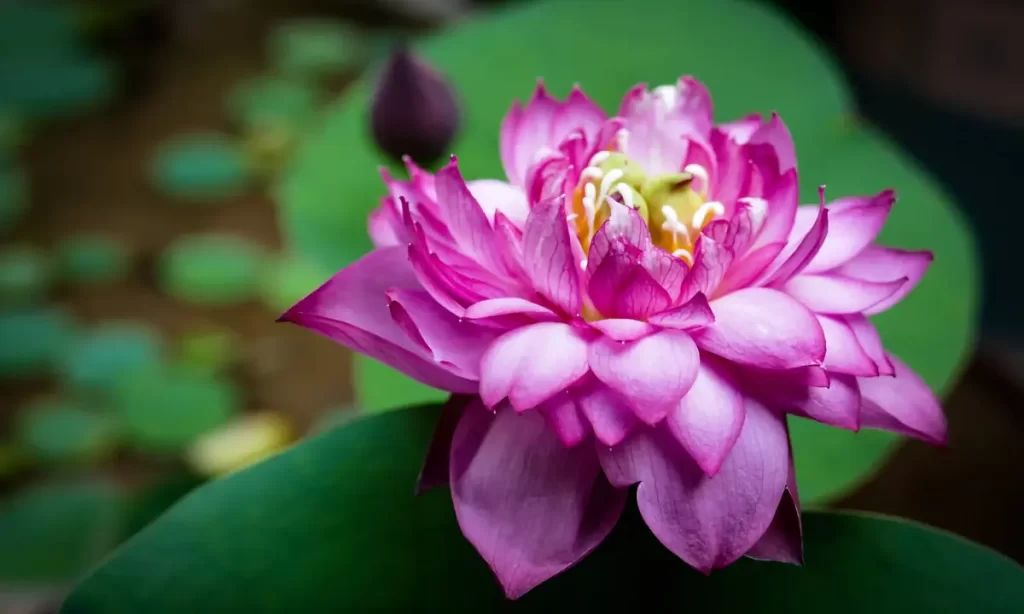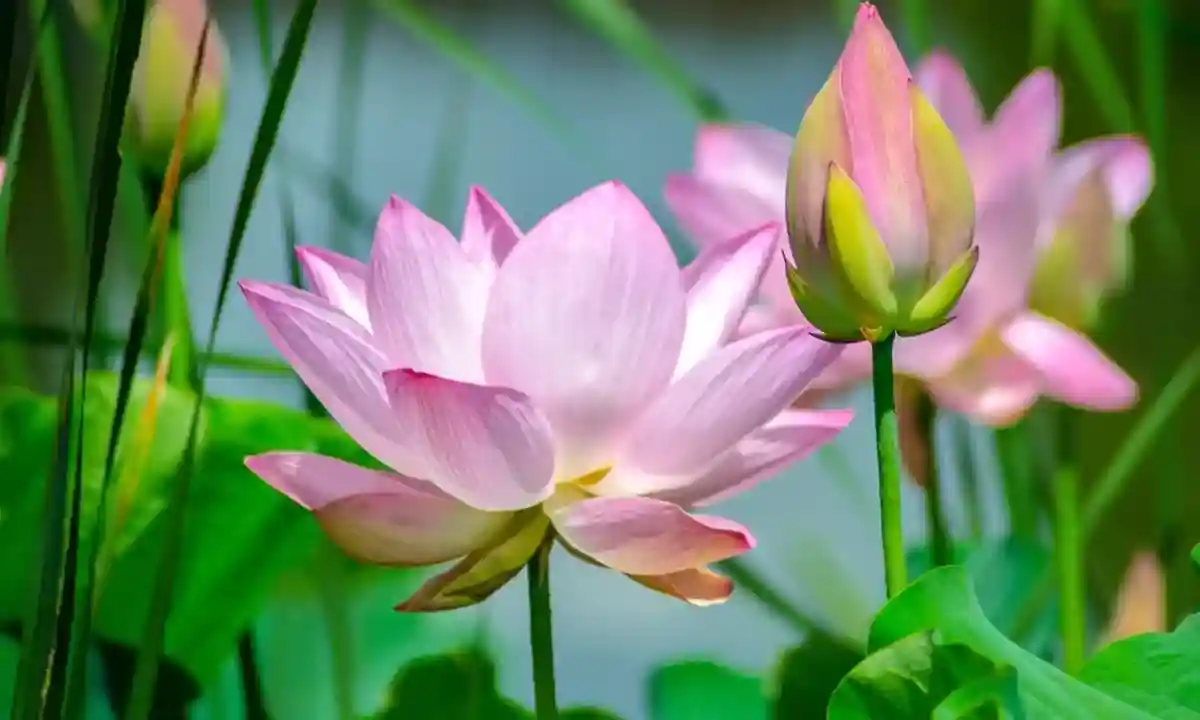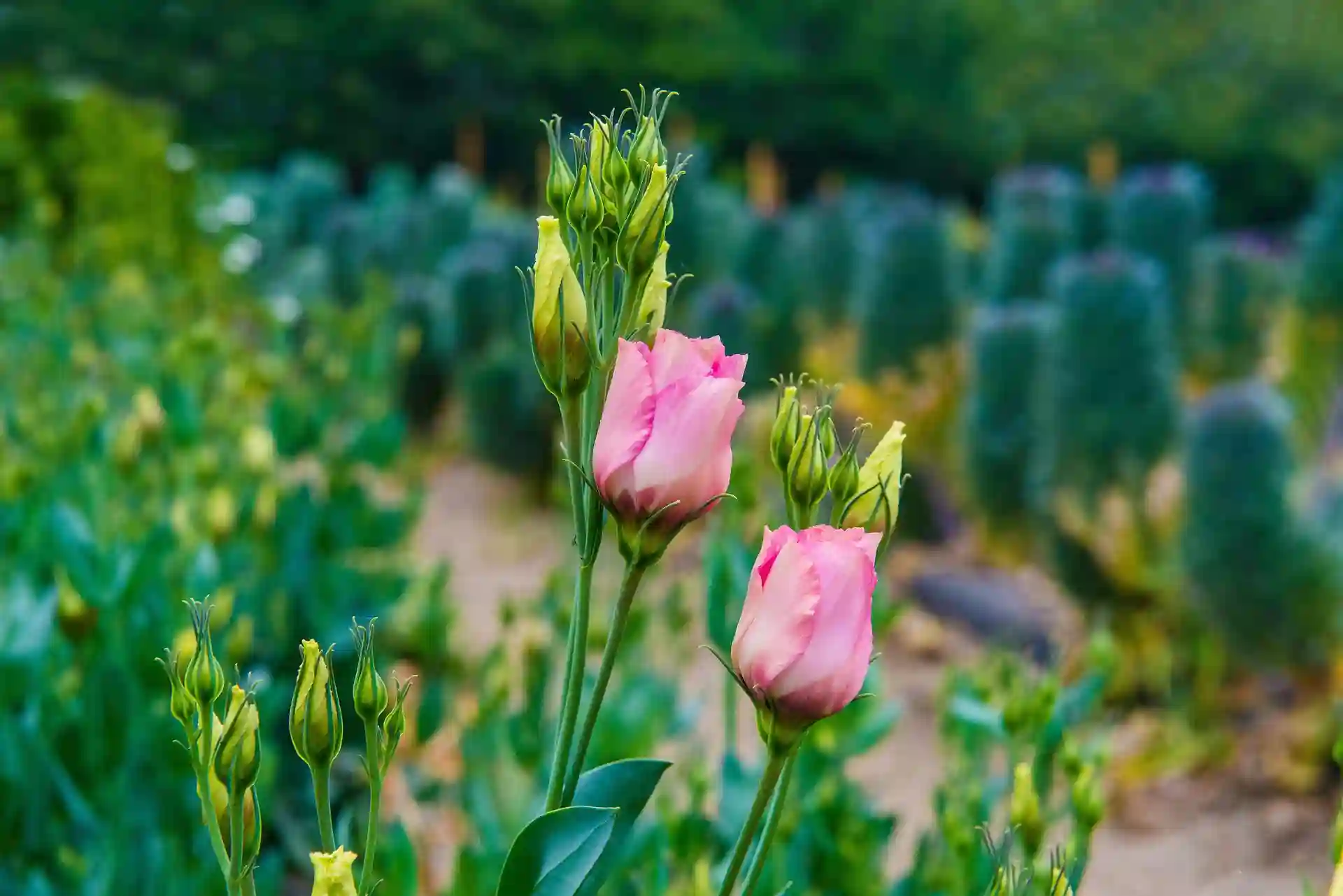There is no aquatic flower more beautiful than the lotus. The lotus is a familiar flower, and many consider it sacred. The lotus flower represents both gentle, calm peace and a new beginning. This flower is native to Southeast Asia. The lotus is considered to be the sacred flower of Gautama Buddha.
The lotus is widely regarded as one of the most beautiful aquatic flowers, Therefore, many people want to grow lotus plants at home as a hobby. People often spend a significant amount of money purchasing lotus plants in large tubs from nurseries. In this article, we will explore easy way to grow & care lotus at home from tubers.
Easy Way to Grow & Care Lotus Plant
The lotus is the sacred flower as well as the national flower of India. This flowering plant is found in vast wetlands on the Asian continent and the lotus is also considered the sacred flower of Gautama Buddha. Although waterlilies look a lot like lotus flowers, they belong to the Nymphaceae family and are not closely related to the Nelumbonaceae family. The scientific name of the lotus plant is Nelumbo nucifera.

Lotus, the beautiful aquatic plant, has been revered in various cultures for thousands of years for its beauty and significance. The lotus plant is not only aesthetically pleasing, but has numerous health benefits. It is believed that the lotus can rise above a person’s stress and troubles and give them a fresh start, just as the lotus rises from the water and washes away the traces of mud. The exquisite beauty of the lotus flower is breathtaking. There are many species of these aquatic plants that can make your garden more beautiful in summer.
How to grow a lotus plant:
Lotus plants can be grown in two ways: first from seed, second from tubers.
Rhizomes, or tubers, vary greatly in size and appearance depending on the lotus variety. The rhizomes or tubers of hybrid varieties are usually small and may not be larger than a pencil in diameter, while some edible or native varieties have very large tubers. The rounded parts of the tuber in the image below are called internodes. The point where two internodes meet is called a node. Growth tips emerge from the nodes and eventually develop into leaves or flowers.

One or more growing tips for leaves and flowers from a healthy tuber are firm to the touch. Be very careful when potting tubers because breaking the growing tips will slow your lotus’s growth and in some cases prevent it from growing at all. Tubers should not be allowed to accumulate.
When to plant lotus tubers?
The ideal time for planting lotus tubers is March to April depending on the temperature location. Wait until nighttime temperatures are above 50°F (10°C) before planting lotus tubers. After planting the tubers, the pot should be kept in a sunny place. Do not start your lotus inside except in greenhouse conditions. Lotus is a perennial plant that needs a sunny warm home. Lotuses prefer 5 to 6 hours of sunlight a day and water temperatures between 75 and 87 degrees.
Pot Selection:
Growing lotus plants in containers requires a certain amount of effort. In general, the bigger the space you can give the lotus plant, the better, when choosing a pot, keep in mind the large water plant we are going to do in a small space in our house. Therefore, a container should be selected as large and deep as possible. Get a pot at least 10 to 20 inches deep and 18 to 25 inches in diameter. If you want to grow a lotus plant in a container, fill the container with garden soil or pond dirt.
Use of soil for planting lotus tubers:
There are two ways to prepare soil for planting lotus tubers.
First, you can use pond scum or river soil, In the second method, the soil is prepared by mixing 2 parts garden loam soil, 1 part dung manure, 1 part leaf rot manure, half spoon of urea, half spoon of potash and half spoon of phosphate. Care should be taken while preparing the soil, the soil cannot be filled by filling the entire tub. A hole should be placed about 20-30 cm below where there will be water, the yield is good.
Do not forget to mix organic fertilizers with the soil before planting the tubers.
If you buy direct lotus seedlings, you will need to bury the plant from the pot. Then take the soil from the side and press it well at the base.
Planting:
The tubers should be buried above the soil and pressed from the sides with soil. Now plant the seedlings and fill the tub with water. Care should be taken that the water is never low. Submerge the pot in water so that the surface is about 2 inches (5 cm) above the soil line. The first leaves should emerge after a few days. Keep raising the water level to match the length of the stem. Once the weather outside is at least 60 degrees F (16 C) and the stems have stretched a few inches (8 cm), you can move your pot outside. Do not submerge the container more than 18 inches (46 cm) below the surface in your outdoor water garden. You may need to lift it up on bricks or cinder blocks.
Pruning
As your lotus plants grow, you may need to prune them to keep them from taking over your pond or garden. Use a pair of scissors to cut away any dead or dying leaves and stems.
Pests and Diseases
Lotus plants are relatively pest-free, but they can be susceptible to fungal diseases. If you notice any yellowing or browning of the leaves, it may be a sign of disease. You can treat the plants with a fungicide to help control the problem.
Different Varieties of Lotus Flower
1. Nelumbo nucifera (Sacred Lotus)
The Nelumbo nucifera, commonly known as the Sacred Lotus, is the most well-known variety of lotus flower. It has large, fragrant, and showy blooms that come in a range of colors, from white to pink, yellow, and red. This variety is often used in religious ceremonies, and its seeds are edible and used in traditional medicine.
2. Nelumbo lutea (American Lotus)
The Nelumbo lutea, also known as the American Lotus, is native to North America and has yellow flowers that bloom in the summer. This variety has a shorter stem than the Sacred Lotus, and its leaves are more round and sometimes have a reddish tint.
3. Nelumbo komarovii (Chinese Lotus)
The Nelumbo komarovii, commonly known as the Chinese Lotus, is a small and delicate variety that has pink flowers and is native to China. Its leaves are small and narrow, and the plant is often grown for its ornamental value in gardens and ponds.
4. Nelumbo nucifera ‘Alba’ (White Lotus)
The Nelumbo nucifera ‘Alba,’ also known as the White Lotus, has large, white flowers that are often used in wedding ceremonies to represent purity and innocence. This variety is easy to grow and maintain and is often found in public parks and gardens.
5. Nelumbo nucifera ‘Mrs. Perry D. Slocum’ (Pink Lotus)
The Nelumbo nucifera ‘Mrs. Perry D. Slocum,’ also known as the Pink Lotus, has large, double pink flowers that bloom in the summer. This variety is named after the wife of a famous horticulturist and is a popular choice for ornamental gardens and water features.
6. Nelumbo ‘Momo Botan’ (Dwarf Lotus)
The Nelumbo ‘Momo Botan,’ also known as the Dwarf Lotus, is a miniature variety that has small, pink flowers and is ideal for small ponds and containers. This variety is easy to care for and requires less space than other lotus varieties.
FAQs About the Lotus Plant
Is the lotus plant only grown in Asia?
No, lotus plants grow all over the country, including North America, especially the United States.
How deep should the water be when planting lotus tubers?
Add enough water to raise the water level about 2-3 inches above the soil.
Is the lotus plant safe for consumption?
Yes, the lotus plant is safe to eat, and it has been used for centuries for its therapeutic benefits.



